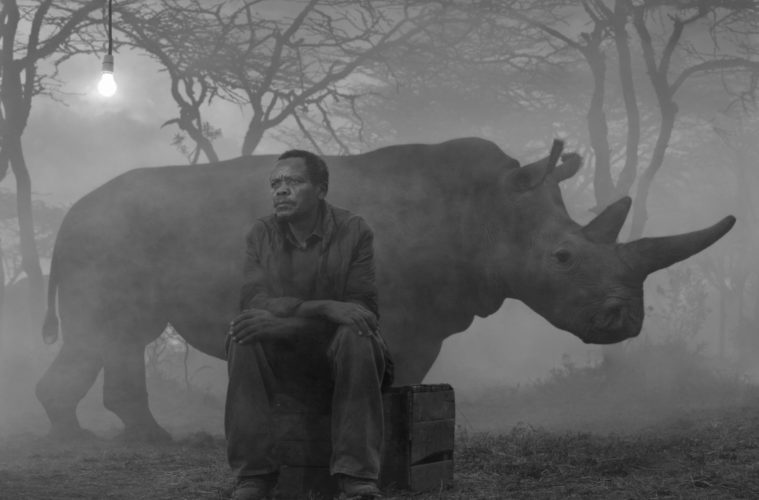The Day May Break is a hefty new book and exhibition launching a global series from Nick Brandt — a photographer and eco-advocate whose dedicated practice of chronicling the effects of the climate crisis, especially in East Africa, also inspired him to co-found the Big Life Foundation with conservationist Richard Bonham. His work is known for memorable and sometimes surreal locations, and a cinematic sensibility in emotionally charged portrayals of wildlife cast as the protagonists of his narratives.
In previous series, especially those where human and animal figures share the scene, Brandt had occasion to employ elaborate processes that might unfold over hours, weeks, or even months. Often this would involve stationary cameras and several exposures at different times of day or even different times of year, so that humans and animals would seem to be sharing a particular place — a liminal place of industry or commerce — which they all visit, but usually not at the same time. In the theatrical and mysterious new works, all made in 2020, they do.
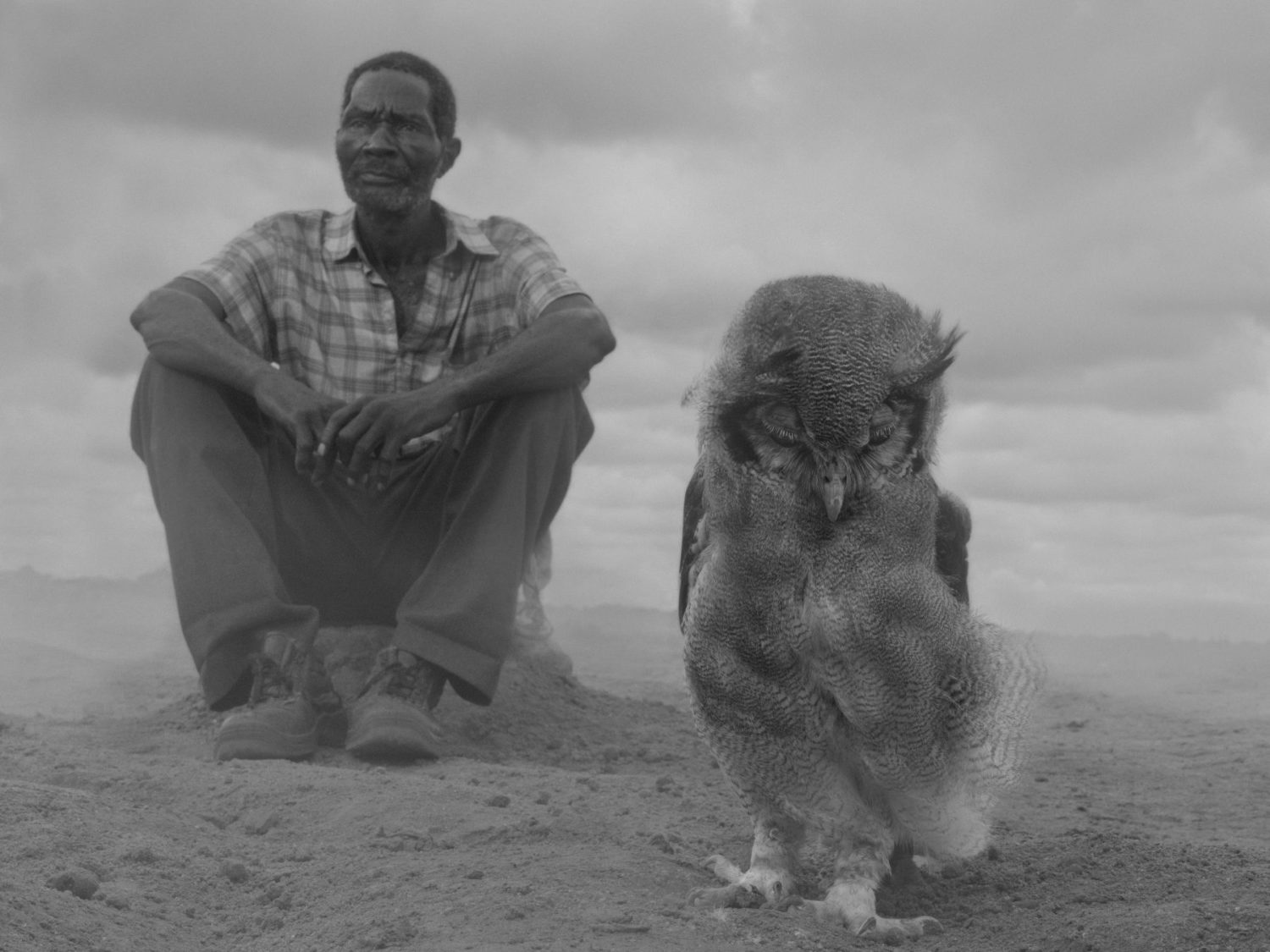
Nick Brandt: Patrick and Harriet on ground, Zimbabwe, 2020. Archival Pigment Print (Courtesy of the artist and Fahey/Klein Gallery)
In the dream-logic aesthetic of these pictures, in which people sit for portraits and a host of rescued wild animals — giraffes, rhinos, all kinds of birds, cheetahs — come and go as they please, the most captivating images make it seem like they are posing together, and in a sense they are. A motif of gentle fog centers and vignettes each portrait, increasing the sense of intimacy between them. In truth, they are not only in the same place physically (in camera, as it were) but they are in the same existential crisis, and for the same reasons. They are all climate refugees, and their fate could soon be a global one.
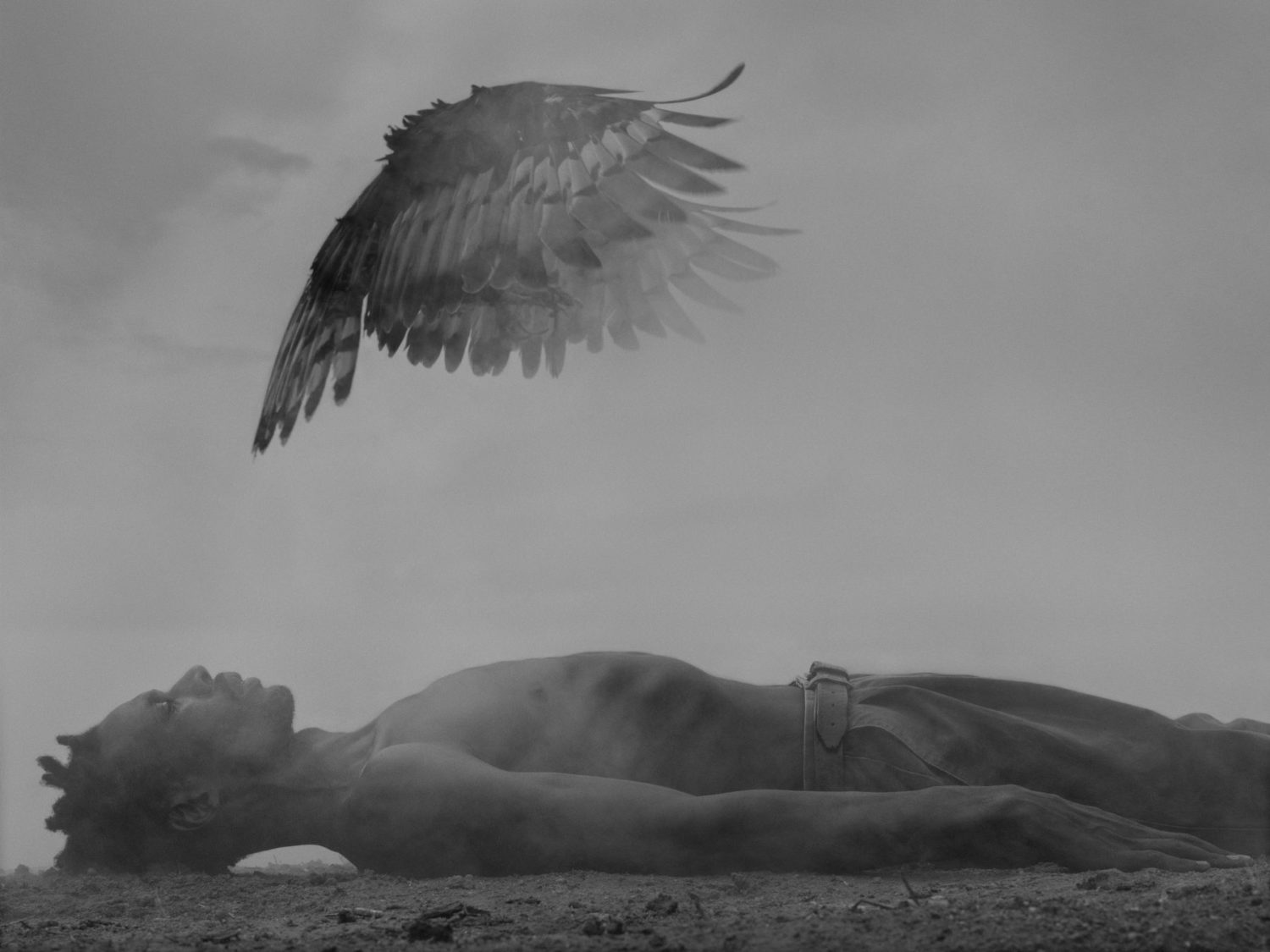
Nick Brandt: Richard and Okra, Zimbabwe, 2020. Archival Pigment Print (Courtesy of the artist and Fahey/Klein Gallery)
“During the course of my photographic life,” writes Brandt in the book’s foreword, “there has been a steady progression toward the photography of people, toward, in The Day May Break, people now being the literal focus of the images. Some may ask, after all these years, why? Because it was time.”
Everyone portrayed in the book — two legs, four legs, hands, hooves, talons and wings — has been catastrophically impacted by the degradation and destruction of their homes, whether by climate or industry or poaching or all three. The intimacy and empathy the images radiate is a melancholy solidarity born of shared trauma. They are all mourning together, and this reads as a peaceful, if upended coexistence. Together they represent the entirety of the natural world, even as they inhabit their own individual stories; they all have names.
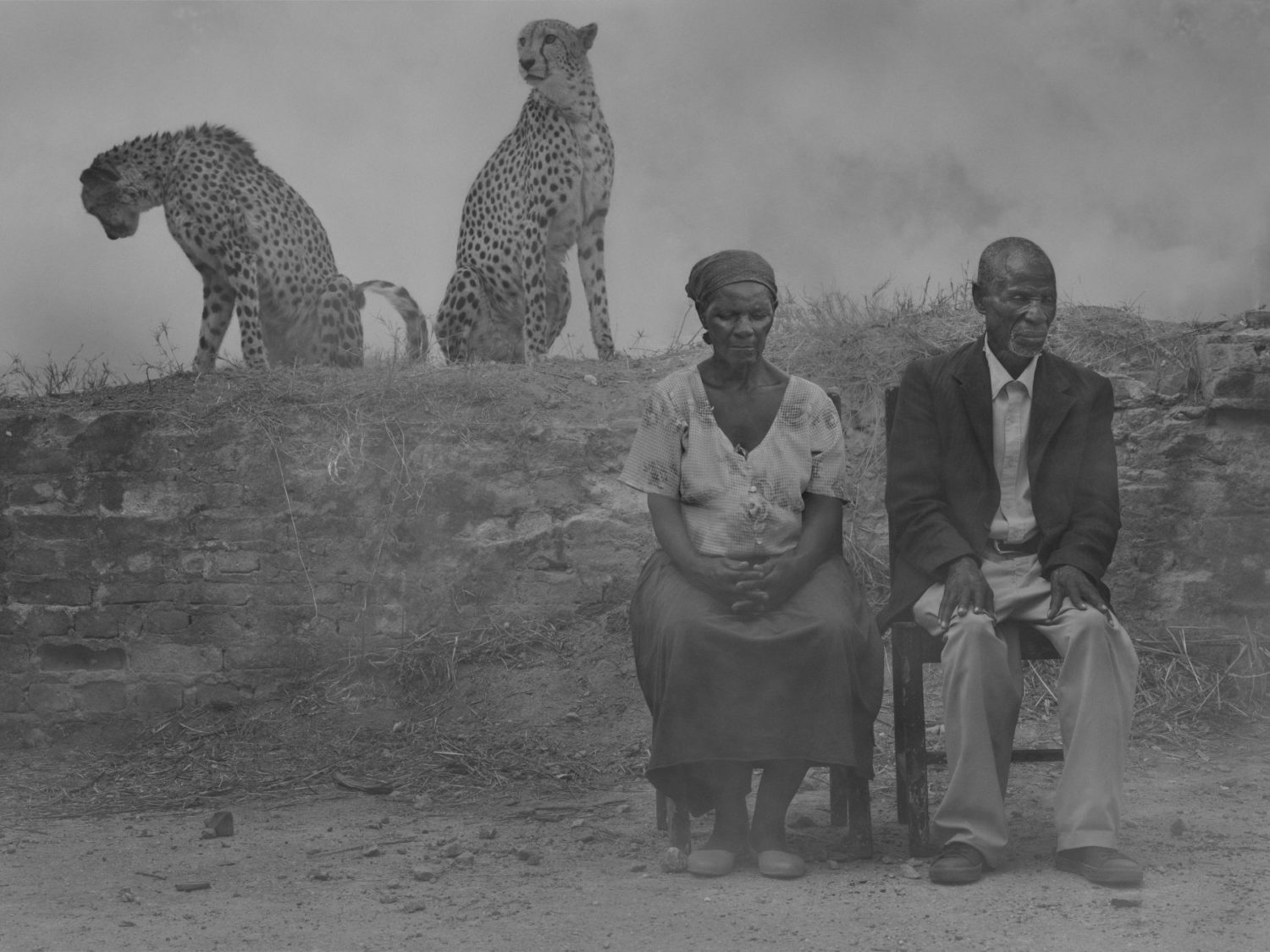
Nick Brandt: Regina, Jack, Levi and Diesel, Zimbabwe, 2020. Archival Pigment Print (Courtesy of the artist and Fahey/Klein Gallery)
Harriet, the Giant Eagle Owl, has lived at the Kuimba Shiri refuge in Zimbabwe for 35 years, rescued as a chick from deforestation of her habitat. Sky the Giraffe is four years old, and lives at Wild Is Life in Zimbabwe. Her whole family was killed by settlers; her species is not protected. She’s photographed with Helen, a widowed farmer from the same part of the country, Harare, as Sky. Sky is also photographed with Richard, a tobacco farmer who knows all too well the toll of short-term economic thinking on long term ecological health. Richard is also pictured with Grace, a Bateleur Eagle living at Kuimba Shiri, who is almost 40 years old. There’s Marimba the Pangolin, and Diesel and Levi the Cheetahs, who are brothers. And with them there are many incredible people, like Helen, James, Githui, and Miriam; there are loving couples and parents and pensive children, old and young men and women with bright eyes and the weight of the world on their shoulders.
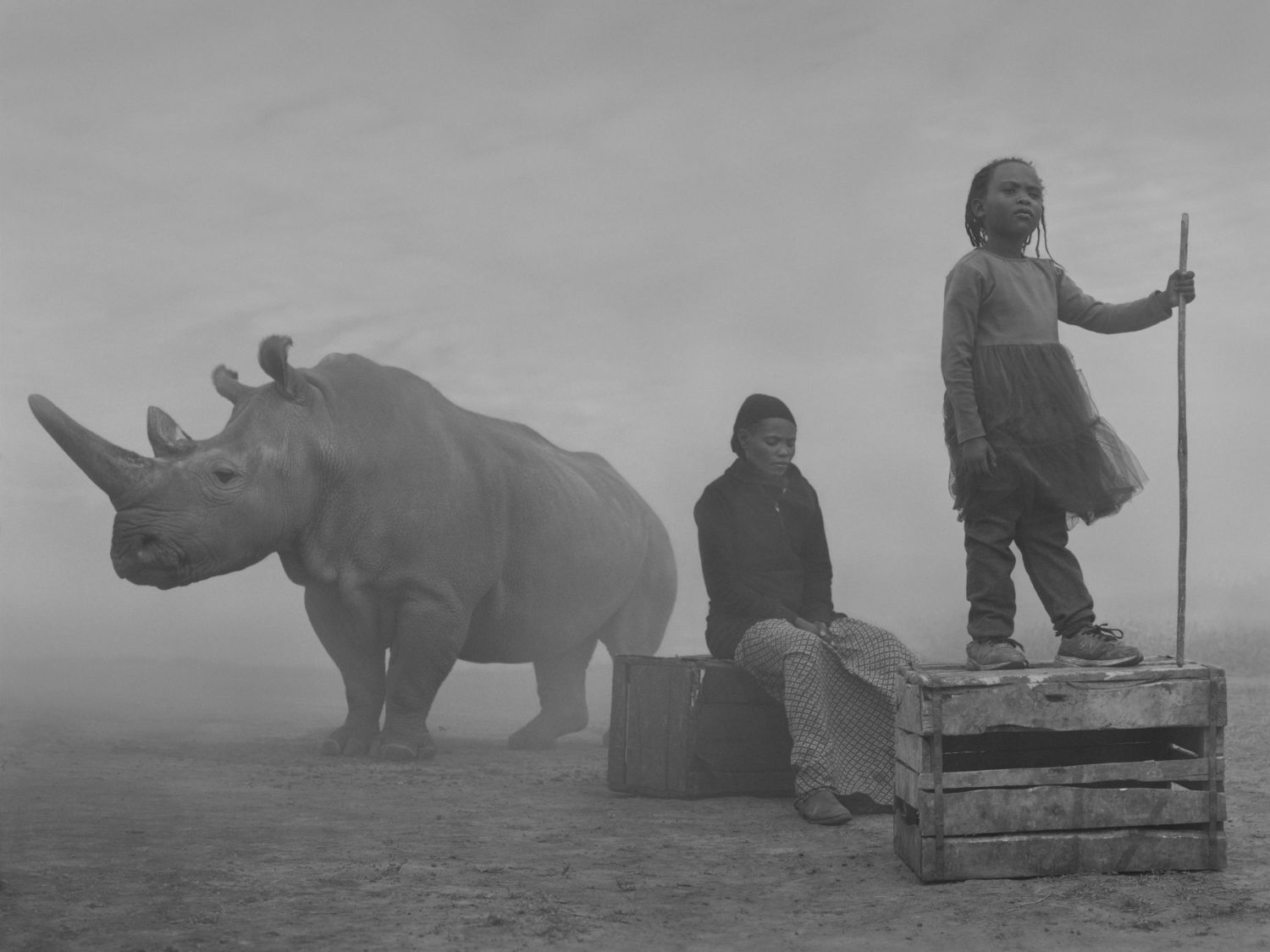
Nick Brandt: Zainab with mother Miriam and Najin, Kenya, 2020. Archival Pigment Print (Courtesy of the artist and Fahey/Klein Gallery)
The photographs from The Day May Break were taken at five sanctuaries and conservancies in Kenya and Zimbabwe, and the book tells all the fuller stories of both the animals and the humans — who they were, who they are now, and how they arrived at this place. Everyone here was happier somewhere else, a long time ago. These are cautionary tales of tenuous survival, and while the pictures themselves are fascinating because of how strange it is to think of the animals and people calmly sharing personal space, it should not be happening and it feels both magical and ominous, hopeful and unsettling. At heart, the question this series poses is whether the day will break like sunrise, or like glass. For as gorgeous, rich and operatic as the images are, this is not an Edenic vision of coexistence, it’s an urgent plea for taking action.
Selections from The Day May Break are on view in Los Angeles at Fahey/Klein Gallery through October 30; the book, published by Hatje Cantz, is available at the gallery and on the internet; for more information visit nickbrandt.com.
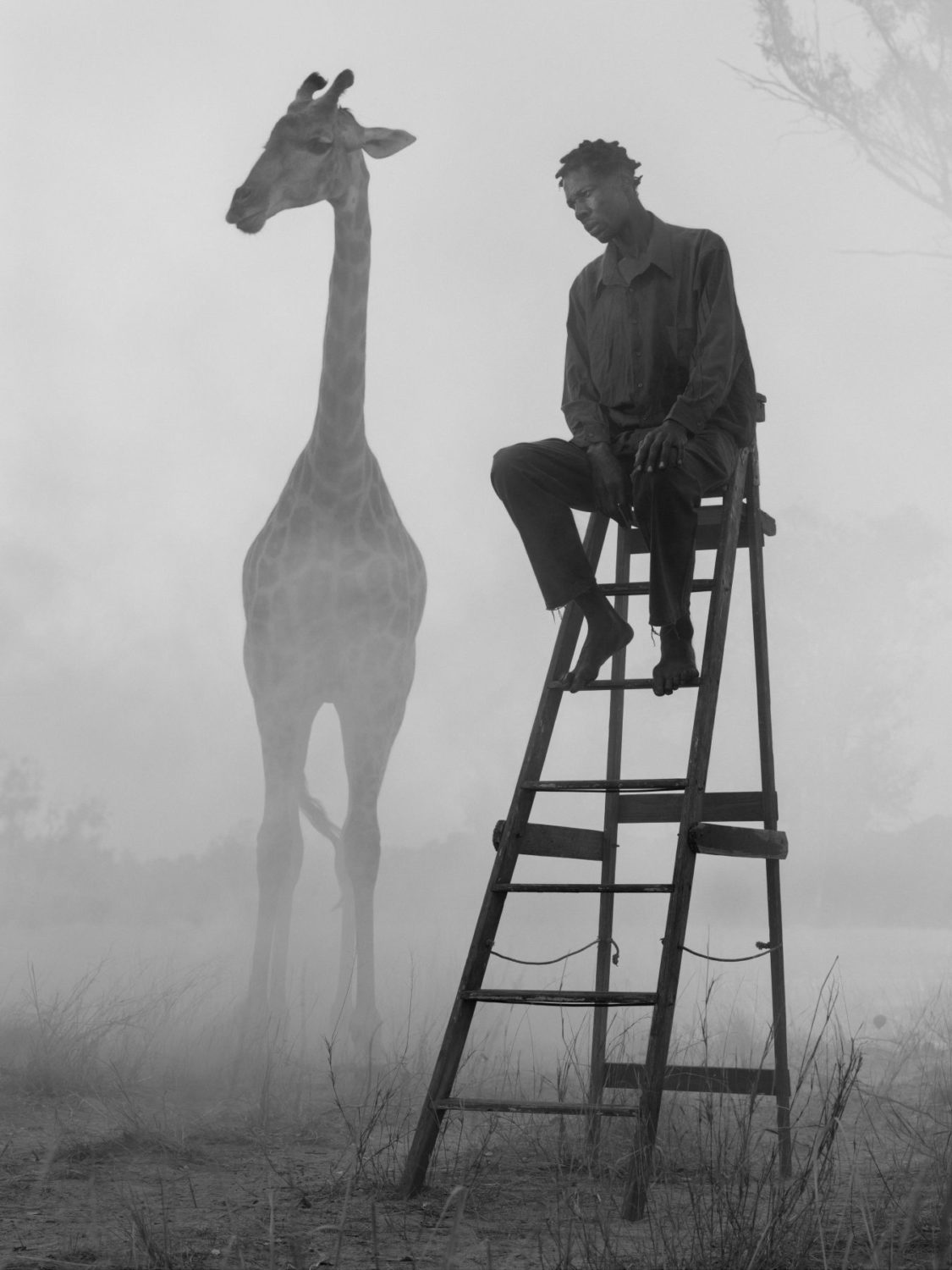
Nick Brandt: Richard and Sky, Zimbabwe, 2020. Archival Pigment Print (Courtesy of the artist and Fahey/Klein Gallery)
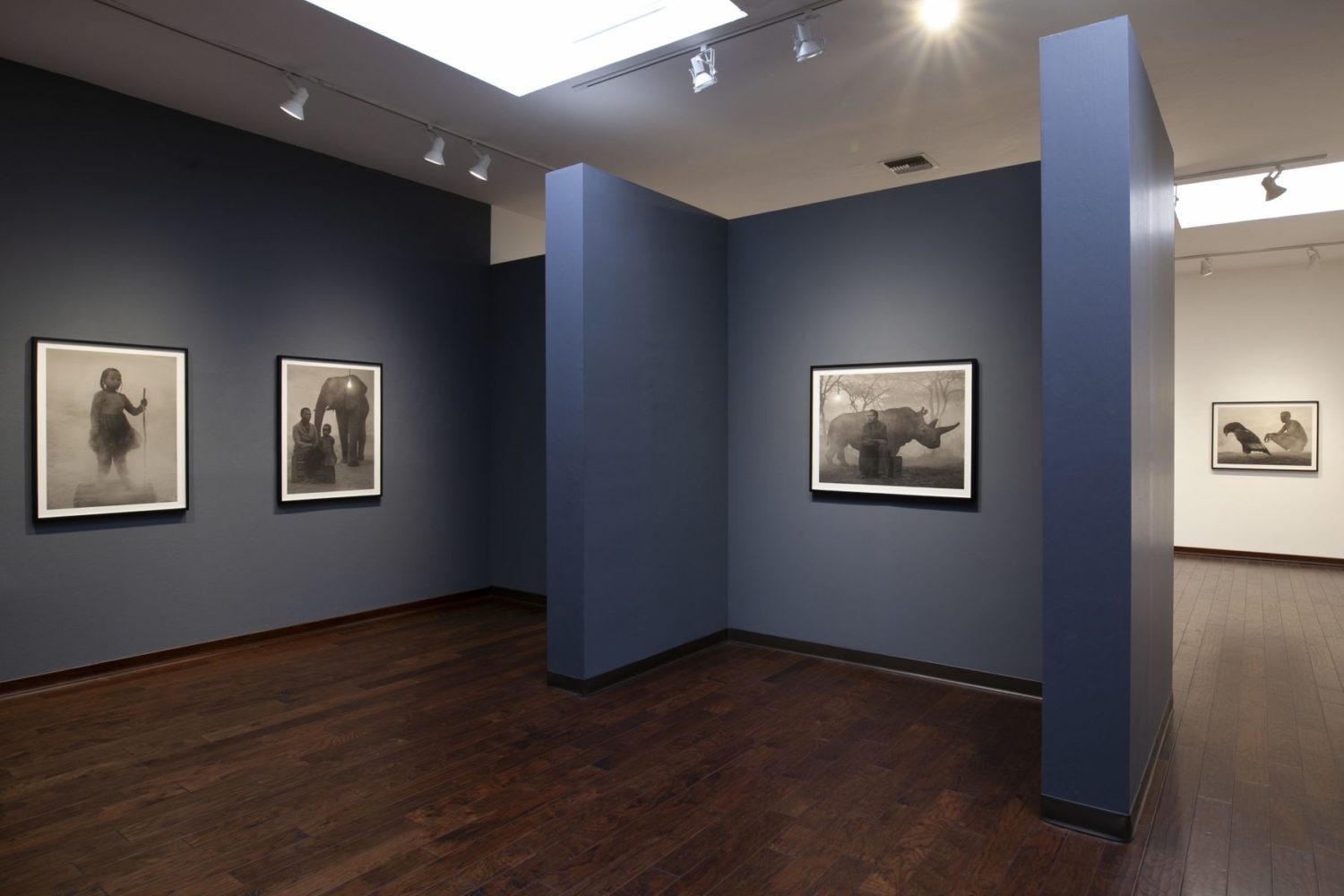
Nick Brandt: The Day May Break, installation view at Fahey/Klein Gallery
Advertising disclosure: We may receive compensation for some of the links in our stories. Thank you for supporting LA Weekly and our advertisers.

